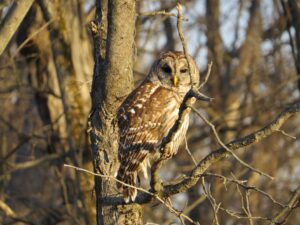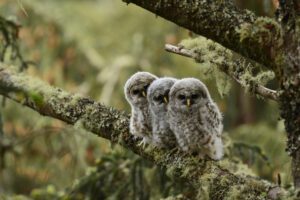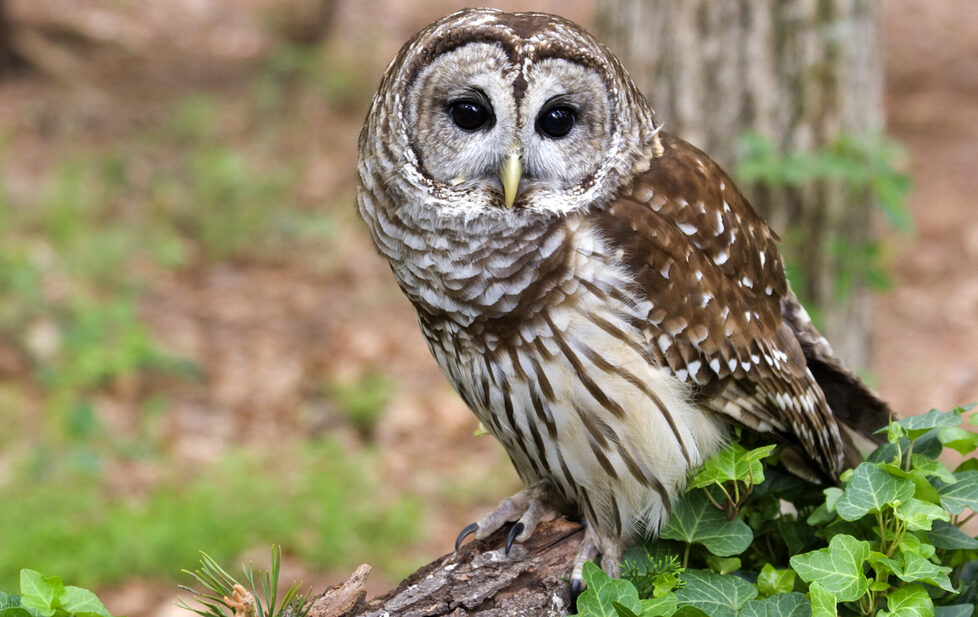Barred Owl, Strix varia
Bill Rowe
As you explore the woods, sooner or later you will find yourself looking at a Barred Owl looking at you. There is no implied threat—the bird seems simply curious and imperturbable—but as you gradually approach for a better look or a photo, sooner or later it will slip away on those specially-constructed silent wing feathers. Barred Owls are common inhabitants of mature forest, often near water, all over the eastern U.S., across Canada, and now down through parts of the northwestern states and into California. This recent western range extension has brought it into contact with the endangered Spotted Owl, a close cousin that it seems to dominate and sometimes replace in old-growth forests. Here in the Midwest, it manages to coexist with the equally common but larger Great Horned Owl, probably by beating a strategic retreat from a Great Horned’s territory. Red-shouldered Hawks occupy similar habitats and hunt by day, and the Barred Owl takes over the “night shift” from that species, feeding on all manner of prey both vertebrate and invertebrate. And, like the hawk, this owl has become a suburbanite in some areas, moving into well-treed parks and neighborhoods, where its loud calls can make you feel as if you are camping out.
IDENTIFICATION: Given a reasonable look, the Barred Owl is easy to separate from the Great Horned by its rounded head (no ear tufts), dark brown eyes (rather than yellow), and double-patterned underparts, barred horizontally across the breast and streaked vertically below that. Its voice is entirely different, an emphatic series of barking hoots that are famously transcribed as “Who cooks for you? Who cooks for you-all?” A mated pair will call back and forth to each other in a cacophony of hoots and cackles.
ST. LOUIS STATUS: Year-round resident in forested areas and sometimes suburbs, as noted above.
Learn more and listen to the calls of Barred Owls here.


Who turned the lights on?
Photo Credit: Bill Rowe
Barred Owl chicks




